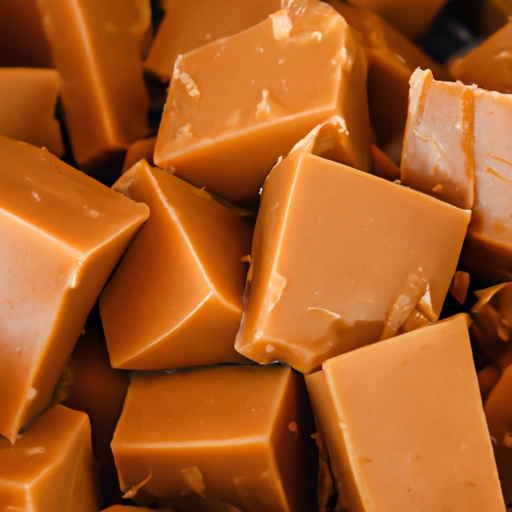Caramel
Description

Caramel is a confectionery product derived from the controlled heating of sugar. This browning process is known as caramelization, which occurs when sugar reaches a temperature of approximately 340°F (170°C) and begins to break down and re-form into complex compounds, giving caramel its distinctive deep golden-brown color and rich, buttery flavor. Caramel can be used in both liquid and solid form, and is known for its versatility in flavoring, coloring, and texturizing a wide array of dishes.
Common uses
Caramel is commonly used as a topping for desserts such as ice cream, as a filling in chocolates and candies, as a flavor enhancer in coffee and beverages, and for decorative purposes in dessert presentations. It also serves as a colorant in baked goods and sauces.
Nutritional value
Calories
Typically, caramel contains about 380 to 450 calories per 100 grams (3.5 oz).
Protein
Caramel has a minimal protein content, generally less than 1 gram per 100 grams.
Fat
Homemade caramel may contain varying amounts of fat depending on added ingredients like butter or cream, but plain caramelized sugar has negligible fat content.
Carbohydrates
Carbohydrates are the primary macronutrient in caramel, with sugar content upwards of 90 grams per 100 grams.
Vitamins
Caramel does not contain significant amounts of vitamins.
Minerals
It also lacks a notable mineral content, although trace amounts of minerals from added ingredients may be present.
Health benefits
As a sugar-based ingredient, caramel does not contribute health benefits and should be consumed in moderation as part of a balanced diet.
Potential risks
Excessive consumption of caramel can lead to increased risks of obesity, type 2 diabetes, and dental cavities. Some types of industrial caramel coloring may contain 4-methylimidazole (4-MEI), which has raised health concerns and is limited in certain regions.
Common recipes
Caramel is featured in a variety of recipes, including flans, crème brûlée, caramel sauce, and caramel apples.
Cooking methods
To make caramel, sugar is heated slowly to 340°F (170°C), until it melts and reaches a rich amber color. It can be combined with cream and butter for a creamy sauce, or further cooked to make a chewy or hard candy.
Pairing with other ingredients
Caramel pairs well with salt to balance its sweetness, with nuts for added texture, and with chocolate or fruit in desserts. It can also complement savory dishes like roasted meats or vegetables with a sweet glaze.
Summary
Caramel is an incredibly popular and versatile ingredient with a long history in global cuisine. Loved for its sweet, rich taste, caramel serves many roles in the kitchen from flavoring and coloring to texturizing. While it provides little nutritional value and should be consumed in moderation, its culinary uses are vast and varied, making it a staple in both home and professional cooking.